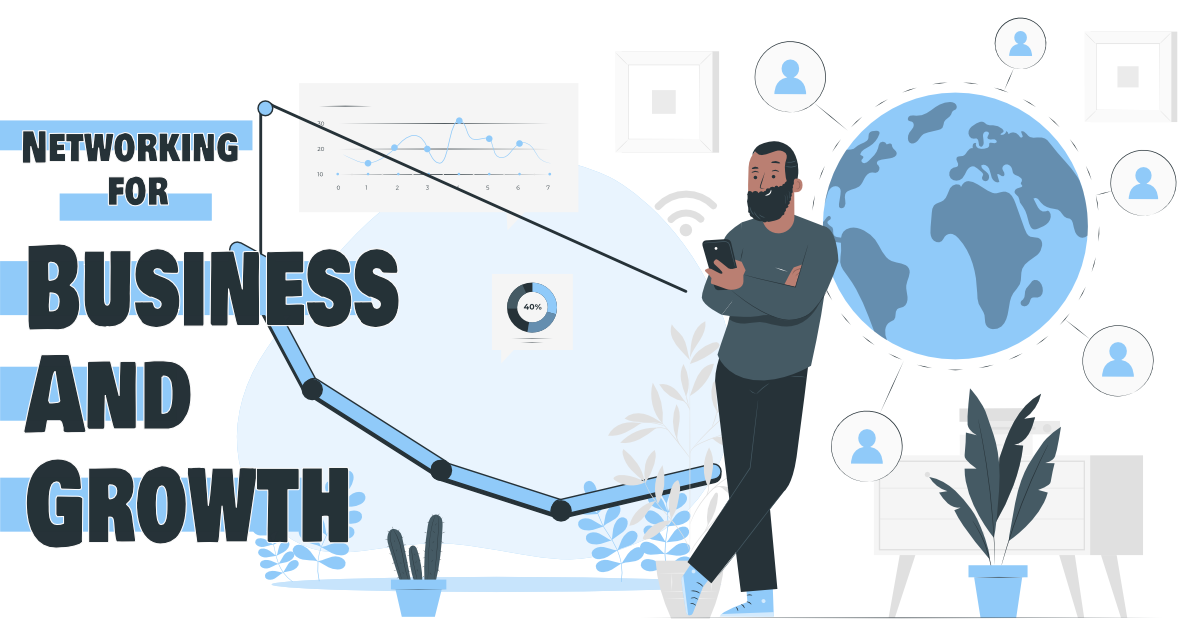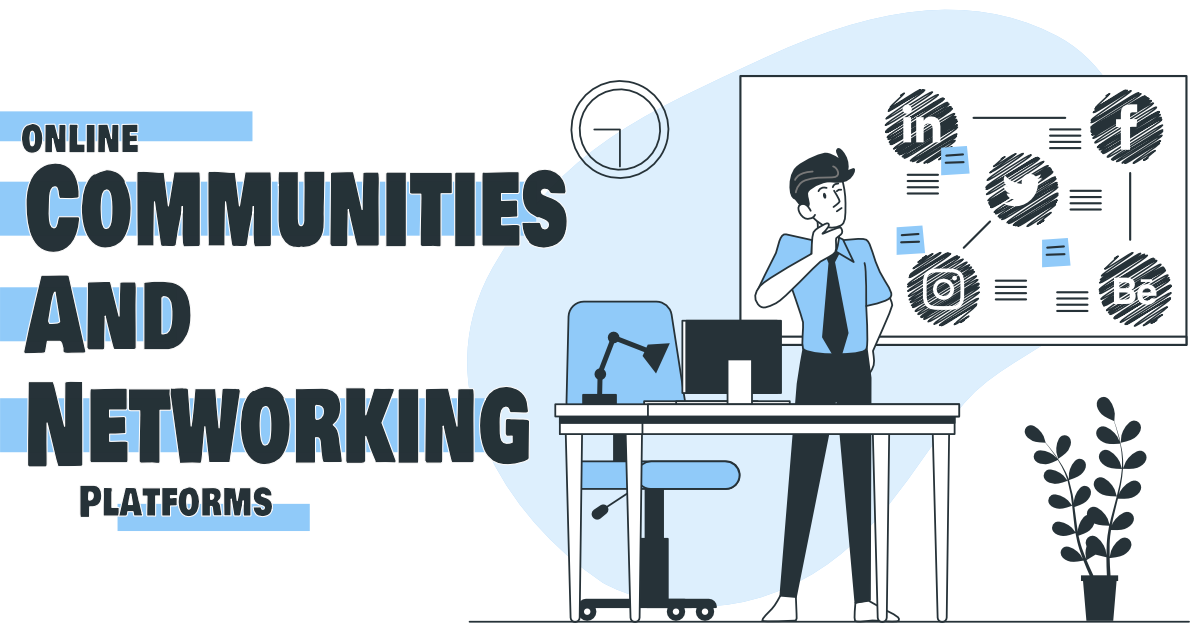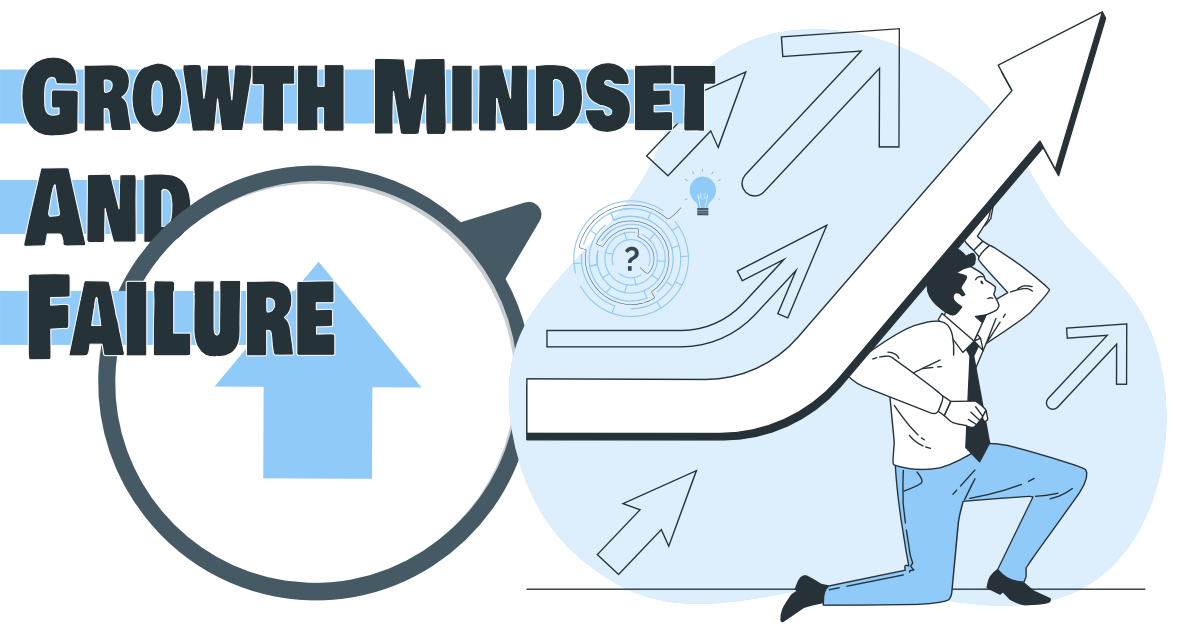Networking is a crucial aspect of any entrepreneurial journey. It is a powerful tool that can help entrepreneurs connect with other business owners, investors, and other key players in their industry. When it comes to networking for business development and growth opportunities, it’s all about building strong relationships and collaborations with other entrepreneurs, partners, and customers. By leveraging the skills, resources, and connections of others, entrepreneurs can unlock new opportunities for growth and expansion. In this blog post, we will explore the importance of networking for business development and growth opportunities, and provide tips and strategies for building a strong network of contacts in the entrepreneurial community.
Identifying and targeting potential business partners and clients
Networking and collaboration are essential for any entrepreneur looking to grow their business. In this article, we will focus on the importance of identifying and targeting potential business partners and clients as part of your networking strategy. We will discuss the benefits of building relationships with key industry players, the best practices for finding and reaching out to potential partners and clients, and provide actionable tips for making the most of these connections.
Identifying and targeting potential business partners and clients is an important step in building a strong network and growing your business. By focusing on key players in your industry, you can build relationships that can lead to new business opportunities, partnerships, and collaborations.
Building relationships with potential partners and clients can lead to new business opportunities and collaborations. These connections can also provide valuable insights into industry trends and help you stay ahead of the competition. Additionally, having a strong network of industry contacts can help you access new markets, resources, and technologies to support your business growth.
How to identify and target potential business partners and clients
- Research: Start by researching key players in your industry. Look for companies, organizations, and individuals that are well-respected and have a strong presence in your field.
- Reach Out: Once you have identified potential partners and clients, reach out to them through networking events, social media, and other channels. Be sure to have a clear and compelling message that explains why you think a partnership or collaboration would be beneficial for both parties.
- Follow-up: Following up with potential partners and clients is important to maintain the relationship. Keep them updated on your business and let them know about any new developments or opportunities that may be of interest to them.
Examples
- A local fashion designer reaches out to a popular fashion blogger to collaborate on a photoshoot. This partnership helped the designer gain exposure and connect with potential customers.
- A software company partners with a consulting firm to offer a bundled solution to clients in the healthcare industry. This collaboration helped both companies access new markets and gain new clients.
Best Practices
- Be prepared: Before reaching out to potential partners and clients, be sure to have a clear and compelling message that explains why a partnership or collaboration would be beneficial for both parties.
- Be persistent: Building relationships takes time and effort. Be persistent in reaching out and following up with potential partners and clients.
- Be professional: Always be professional and respectful when reaching out and interacting with potential partners and clients.
Actionable Tips
- Use social media to connect with potential partners and clients. LinkedIn, Twitter, and other platforms can be great ways to connect with industry players and start building relationships.
- Attend industry events and conferences. These events are a great way to meet potential partners and clients in person and make a strong impression.
- Be creative in your approach. Find unique ways to reach out and connect with potential partners and clients that will set you apart from others.
In conclusion, networking and collaboration are essential for any entrepreneur looking to grow their business. By identifying and targeting potential business partners and clients, you can build relationships that can lead to new business opportunities, partnerships, and collaborations. Remember to be prepared, persistent, and professional in your approach, and always be on the lookout for new opportunities to connect with potential partners and clients.
Building a strong professional reputation and referral network
Building a strong professional reputation and referral network is a key aspect of networking for business development and growth opportunities. Having a good reputation in your industry can help you attract new clients, partners, and investors, while a strong referral network can help you expand your reach and grow your business. In this section, we will explore the importance of building a strong professional reputation and referral network, and provide tips and strategies for doing so.
What is a professional reputation and referral network?
A professional reputation is the way that others view you and your business. It is the perception that others have of your expertise, credibility, and trustworthiness. A referral network is a group of people who can refer new business to you. This can include clients, partners, and other entrepreneurs.
Why is it important?
A strong professional reputation and referral network can help you stand out in your industry and attract new opportunities for growth and expansion. When others view you as a credible and trustworthy expert in your field, they are more likely to do business with you. A strong referral network can also help you expand your reach and connect with new clients and partners.
How to build a strong professional reputation and referral network
- Be active in your industry: Participate in industry events, join relevant professional organizations, and be active on social media. By being visible in your industry, you can establish yourself as a thought leader and attract new opportunities.
- Provide value: Focus on providing value to your clients, partners, and other entrepreneurs. This can include sharing your expertise, offering helpful resources, and connecting others with valuable contacts.
- Be responsive and reliable: Respond quickly to inquiries, meet deadlines, and be reliable in delivering what you promise. This will help you build a reputation as a dependable and trustworthy business partner.
- Keep in touch with your network: Keep in touch with your clients, partners, and other entrepreneurs on a regular basis. This will help you maintain strong relationships and stay top of mind when new opportunities arise.
Examples
- An entrepreneur who specializes in creating and scaling e-commerce businesses. He is active in online entrepreneur communities and is always willing to share his knowledge and resources with others. He is also very responsive to inquiries and is always willing to help out when he can. As a result, he has built a strong reputation as a go-to expert in his field, and has a large referral network of clients, partners and other entrepreneurs.
- A startup founder who specializes in developing mobile apps. She is active on social media and regularly attends industry events. She is always willing to share her knowledge and resources with others, and is always looking for ways to connect others with valuable contacts. As a result, she has built a strong reputation as a leading expert in her field and has a large referral network of clients, partners and other entrepreneurs.
Best Practices
- Be authentic and genuine
- Take initiative
- Follow up
- Give back to your network
- Keep your network informed about your business developments
Actionable Tips
- Attend industry events and conferences
- Volunteer for leadership roles in professional organizations
- Offer to speak at industry events
- Share your expertise through writing articles or creating videos
- Connect with other entrepreneurs and offer to help them with their businesses
In conclusion, building a strong professional reputation and referral network is a crucial aspect of networking for business development and growth opportunities. By being active in your industry, providing value, being responsive and reliable and keeping in touch with your network, entrepreneurs can establish themselves as a thought leader in their field and attract new opportunities for growth and expansion. Remember to be authentic and genuine, take initiative, follow-up, give back to your network, and keep your network informed about your business developments. These tips along with reading the books mentioned above will help you to build a strong professional reputation and referral network.
Networking for lead generation and sales opportunities
Networking is a powerful tool for entrepreneurs looking to generate leads and close sales. By building relationships and connecting with potential customers and partners, entrepreneurs can gain access to new markets and revenue streams, and grow their businesses. In this article, we will explore the what, why, and how of networking for lead generation and sales opportunities, and provide tips and best practices for making the most of your networking efforts.
What is Networking for Lead Generation and Sales?
Networking for lead generation and sales is the process of building relationships and connections with potential customers and partners to generate new business opportunities. This can include attending networking events, joining industry groups and associations, and connecting with other entrepreneurs and business leaders.
Why is Networking Important for Lead Generation and Sales?
Networking is important for lead generation and sales because it allows entrepreneurs to get in front of potential customers and partners, and showcase their products or services. By building relationships with other business leaders and decision-makers, entrepreneurs can gain access to new markets and revenue streams, and grow their businesses. Additionally, networking can also help entrepreneurs to gain valuable insights and feedback on their products and services, and to identify new trends and opportunities in their industries.
How to Network for Lead Generation and Sales
- Identify the right networking events and groups to attend. Look for events and groups that are relevant to your industry, and that are attended by potential customers and partners.
- Prepare an elevator pitch. Develop a clear and concise pitch that highlights the value of your products or services, and that is easy for others to understand.
- Follow up. After networking events and meetings, follow up with the people you met to continue the conversation and build relationships.
- Give back. Offer to help others in your network and make introductions to people who could benefit from each other’s services or products.
Real Life Examples
- A small business owner who specializes in catering services, attends a networking event hosted by a local chamber of commerce. There, they meet the owner of a new hotel that is looking for a catering company for their events. The small business owner gets the opportunity to showcase their services and lands a contract with the hotel.
- A tech startup networking with other startups in their industry through a local startup accelerator program. They were able to generate leads for potential customers and also found potential partners for their product.
Best Practices
- Be authentic: Be genuine and transparent when networking. People can tell when you’re only interested in selling them something.
- Be prepared: Have a clear understanding of your products or services and be able to answer any questions that may come up.
- Be responsive: Follow up with the people you meet in a timely manner and be responsive to any inquiries they may have.
- Be consistent: Networking is a long-term game, be consistent in your efforts.
Actionable Tips
- Use LinkedIn to connect with potential customers and partners.
- Start a referral program to encourage your current customers to refer new business.
- Join local business groups and attend networking events in your area.
- Use social media to share content and engage with your network.
In conclusion, networking is a powerful tool for entrepreneurs looking to generate leads and close sales. By building relationships and connecting with potential customers and partners, entrepreneurs can gain access to new markets and revenue streams, and grow their businesses. By identifying the right networking events and groups, preparing an effective elevator pitch, following up, and giving back to your network, entrepreneurs can make the most of their networking efforts. Additionally, by being authentic, prepared, responsive, and consistent in your networking efforts, entrepreneurs can build a strong professional reputation and referral network, that will help them generate leads and close sales opportunities. Remember, networking is a long-term game, the key is to be consistent and persistent in your efforts.
Building relationships with key industry influencers and thought leaders
In today’s business landscape, building relationships with key industry influencers and thought leaders can have a significant impact on the growth and success of a business. These individuals are often well-connected, respected, and have a large following in their industry, making them valuable assets for entrepreneurs looking to expand their reach and gain visibility for their brand. In this article, we will explore the importance of building relationships with key influencers and thought leaders, and provide tips and best practices for doing so.
Building relationships with key industry influencers and thought leaders is the process of identifying and connecting with individuals who have a strong influence in your industry. These can include entrepreneurs, executives, industry experts, and even media personalities. They have a large following and a respected voice in their industry, and can be a valuable asset to any entrepreneur looking to expand their reach and gain visibility for their brand.
Having a relationship with key industry influencers and thought leaders can bring a number of benefits to entrepreneurs. These individuals can help entrepreneurs gain visibility and credibility in their industry, connect them with new business opportunities, and even provide valuable advice and mentorship. Additionally, having a relationship with key influencers and thought leaders can open the door to new partnerships and collaborations, allowing entrepreneurs to tap into new markets and revenue streams.
Building relationships with key industry influencers and thought leaders can take time and effort, but it is well worth it. Here are some best practices for building and maintaining relationships with key influencers and thought leaders:
- Identify key influencers and thought leaders in your industry: Research and identify individuals who are well-respected and have a large following in your industry.
- Engage with them on social media: Follow them on social media, like and share their content, and engage with them in the comments.
- Attend industry events: Attend industry events and conferences where key influencers and thought leaders will be present. This will give you the opportunity to meet them in person and start building a relationship.
- Reach out to them: Once you have identified key influencers and thought leaders, reach out to them and introduce yourself. You can do this via email, social media, or in person.
- Add value: When building relationships with key influencers and thought leaders, it is important to add value to their lives. This can be done by sharing valuable content, providing helpful advice, or even making an introduction to someone in your network that they would find valuable.
- Follow up: Following up is key to building relationships. Make sure to follow up with key influencers and thought leaders after initial contact and continue to engage with them on a regular basis.
Real life examples
- Gary Vaynerchuk a serial entrepreneur, CEO, and internet personality, who has built a loyal following and is well-respected in the marketing and business world. He is a great example of how an individual can become a key influencer and thought leader through their work, social media presence and consistent effort.
- Tim Ferriss is an author, entrepreneur and podcast host, who has built a large following and is well-respected in the business and personal development world. He has interviewed hundreds of successful entrepreneurs and thought leaders, and has shared valuable insights and advice on his podcast and in his books.
Best practices
- Be authentic and genuine in your interactions with key influencers and thought leaders.
- Be respectful of their time and don’t ask for too much too soon.
- Be prepared and have a clear goal in mind when reaching out to key influencers and thought leaders.
- Follow up and continue to engage with key influencers and thought leaders on a regular basis.
In conclusion, networking and building relationships with key industry influencers and thought leaders is an essential aspect of growing a successful business. By identifying and connecting with individuals who are respected and well-connected in your industry, you can gain valuable insights, access new opportunities, and increase your visibility and credibility. By following the tips and best practices outlined in this article, you can develop effective strategies for building meaningful relationships with influencers and thought leaders. Remember to always be authentic, genuine, and offer value to others. With the right approach, you can establish a strong network of influential contacts that can help you achieve your business goals.
Utilizing networking events and networking platforms to connect with potential investors and funding sources
Networking events and online platforms are powerful tools for connecting with potential investors and funding sources. Whether you’re looking to raise seed capital, secure a venture round, or find angel investors, the right connections can make all the difference. In this article, we’ll explore the benefits of networking for fundraising, and provide tips and best practices for making the most of networking events and platforms.
Networking events and platforms are opportunities to connect with potential investors and funding sources. These events and platforms can include industry conferences, startup events, angel groups, venture capital firms, and online communities.
Networking is an essential part of the fundraising process. It can help you build relationships with key players in the industry, learn about new funding opportunities, and gain access to valuable resources and advice. Additionally, networking can help you build credibility, establish your brand, and demonstrate your company’s value proposition.
How to utilize networking events and networking platforms
- Attend networking events and conferences relevant to your industry.
- Join online communities and groups that focus on fundraising and investment.
- Build relationships with key players in the industry, including investors, entrepreneurs, and industry experts.
- Utilize social media platforms to connect with potential investors and funding sources.
- Use the opportunity to pitch your company’s value proposition and business model in a compelling way.
- Follow up with potential investors and funding sources after the event or online interaction.
Relevant examples
- A recent study found that more than 40% of all startup funding in the US comes from angel investors, many of whom are found through networking events and online communities.
- A startup founder who attended a local startup event was able to connect with a venture capitalist who later invested in their company.
Best practices
- Be prepared: Research the attendees and have a clear idea of the type of investors you are looking for.
- Be professional: Dress appropriately, have business cards and a well-prepared elevator pitch.
- Be genuine: Don’t approach networking events with a sales pitch, focus on building real relationships.
- Follow-up: After the event, make sure to follow up with the contacts you made and keep the conversation going.
Actionable tips
- Set realistic goals: Determine what you want to achieve before attending a networking event or joining an online community.
- Target the right events: Identify which events will be most beneficial to your fundraising efforts.
- Use social media: Utilize platforms like LinkedIn to connect with potential investors and funding sources.
- Be open to new opportunities: Be open to new opportunities and be prepared to pivot if necessary.
In conclusion, networking for lead generation and sales opportunities is a key component of building a successful business. By understanding the importance of building relationships with key industry influencers and thought leaders, utilizing networking events and platforms to connect with potential investors and funding sources, and building a strong professional reputation and referral network, entrepreneurs can open up new doors for their businesses and take their success to the next level. While building a successful business is no easy task, these strategies will help entrepreneurs increase their chances of success and continue to grow their businesses over time.
Creating mutually beneficial partnerships and collaborations to drive business growth
Collaboration and partnerships are essential to business growth, as they provide opportunities for businesses to expand their reach, share resources, and gain access to new markets and customers. In this article, we will explore the importance of creating mutually beneficial partnerships and collaborations to drive business growth, and provide actionable tips, best practices, and relevant examples to help entrepreneurs successfully navigate this process.
Creating mutually beneficial partnerships and collaborations involves identifying other businesses or organizations that share similar goals and values, and working together to achieve mutually beneficial outcomes. This can include sharing resources, pooling expertise, and leveraging each other’s networks and customer bases.
Collaboration and partnerships can provide businesses with a number of benefits, including increased reach, access to new markets and customers, and cost savings through shared resources. Additionally, partnerships and collaborations can also lead to the development of new products and services, and can provide opportunities for businesses to tap into new expertise and technologies.
To create mutually beneficial partnerships and collaborations, entrepreneurs should begin by identifying potential partners and collaborators, and evaluating their goals, values, and resources. This can include conducting market research, attending networking events, and reaching out to other businesses and organizations in their industry. Once potential partners have been identified, entrepreneurs should then work to establish clear goals, objectives, and expectations for the partnership, and develop a plan for achieving these goals.
Relevant examples
- In the technology industry, Google and Apple have collaborated on various projects such as creating a standard for mobile devices and making sure that the phone works properly with the Google Maps and YouTube apps.
- In the retail industry, Target and Neiman Marcus collaborated to create a limited-edition holiday collection, which sold out quickly and generated significant buzz for both brands.
Best practices
- Clearly define the goals and objectives of the partnership
- Communicate regularly and openly
- Share resources, knowledge, and expertise
- Be open to new ideas and perspectives
- Respect each other’s business goals and values
- Celebrate successes and learn from failures
Actionable tips
- Start small: Begin by testing the waters with a small project or pilot before committing to a larger partnership.
- Be selective: Only partner with organizations and businesses that share your values and goals.
- Set clear expectations: Establish clear goals, objectives, and expectations for the partnership from the outset.
- Communicate regularly: Regular communication is key to maintaining a strong and successful partnership.
In conclusion, creating mutually beneficial partnerships and collaborations is an essential part of business growth and success. By identifying potential partners, establishing clear goals and objectives, and working together to achieve mutually beneficial outcomes, entrepreneurs can open up new opportunities for growth and success. By following the best practices and actionable tips outlined in this article, entrepreneurs can successfully navigate the process of creating mutually beneficial partnerships and collaborations and drive business growth.
Leveraging professional networks to gain access to new markets and target audiences
Networking and collaboration are essential to the success of any entrepreneurial venture. Building a strong professional network can not only open doors to new business opportunities, but also provide access to new markets and target audiences. In this article, we will discuss how entrepreneurs can leverage their professional networks to expand their reach and grow their businesses.
Leveraging professional networks to gain access to new markets and target audiences is the process of utilizing the connections and relationships within your network to reach new customers or clients, and expand your business into new markets.
Expanding into new markets can provide a significant growth opportunity for any business, and having access to a professional network can make this process much easier. By leveraging the connections within your network, you can gain valuable insights and information about new markets, as well as access to potential customers and partners.
There are several ways entrepreneurs can leverage their professional networks to gain access to new markets and target audiences. Here are a few examples:
- Ask for introductions: If you are interested in a specific market or target audience, ask members of your network if they know anyone in that industry or demographic.
- Attend networking events: Attend networking events that are specific to the market or target audience you are interested in. This will allow you to meet and connect with individuals who can provide valuable information and insights.
- Utilize online networking platforms: Utilize online networking platforms such as LinkedIn to connect with individuals in the markets or target audiences you are interested in.
- Create partnerships: Consider creating partnerships or collaborations with individuals or companies within your network who have access to new markets or target audiences.
Examples
- A small tech startup leverages their professional network to gain access to the enterprise market by connecting with an executive at a large company who becomes an advisor and introduction to potential enterprise clients.
- A fashion designer utilizes her professional network to expand her business into the Asian market by connecting with a distributor at a trade show who introduces her to potential retail partners in Asia.
Best Practices
- Be specific about the market or target audience you are interested in, and be clear about how your network can help.
- Be patient and persistent. Building a professional network takes time, and gaining access to new markets and target audiences may not happen overnight.
- Be open to new opportunities and be willing to explore different ways to expand your business.
- Follow up with individuals in your network after connecting.
Actionable Tips
- Make a list of the markets and target audiences you are interested in, and start identifying individuals in your network who may be able to help.
- Attend networking events and join online networking groups that are specific to the markets and target audiences you are interested in.
- Consider joining a networking group or association that is specific to your industry or business.
- Be active on social media and online networking platforms.
In conclusion, networking and collaboration are essential to the success of any entrepreneurial venture. Building a strong professional network can not only open doors to new business opportunities, but also provide access to new markets and target audiences. By leveraging their professional networks, entrepreneurs can gain valuable insights and information about new markets, as well as access to potential customers and partners. With persistence and patience, entrepreneurs can expand their reach and grow their businesses.
Building strategic alliances and partnerships to expand your business
Networking and collaboration in the entrepreneurial community is essential for business growth and development. Building strategic alliances and partnerships is one way to expand your business and gain access to new markets and target audiences. In this article, we will discuss the importance of building strategic alliances and partnerships, how to identify potential partners, and best practices for forming successful partnerships.
A strategic alliance is a formal agreement between two or more parties to work together to achieve a common goal. Strategic alliances can take many forms, including joint ventures, licensing agreements, and distribution agreements. Partnerships can also be used to gain access to new markets, target audiences, or funding sources.
Strategic alliances and partnerships can provide many benefits to businesses, including:
- Access to new markets and target audiences
- Increased visibility and credibility
- Shared expertise and resources
- Increased efficiency and cost savings
- Access to funding and investment opportunities
To identify potential partners for a strategic alliance or partnership, consider the following:
- Identify your goals and objectives for the partnership
- Research potential partners that align with your goals and objectives
- Evaluate the potential partners’ strengths and weaknesses
- Consider the potential partners’ values, culture, and business model
- Look for a potential partner that complements your business and fills in gaps where your business is weak.
Relevant Examples
- Microsoft and LinkedIn formed a strategic alliance to provide an integrated professional networking and productivity platform
- Nestle and Starbucks formed a strategic alliance to bring Starbucks’ coffee and tea products to Nestle’s global consumers
- Procter & Gamble and Unilever formed a strategic alliance to share expertise, resources, and technology in sustainability and environmental impact
Best Practices
- Clearly define the goals and objectives of the partnership
- Establish clear roles and responsibilities for each party
- Communicate effectively and regularly
- Establish clear metrics for measuring success
- Be open to change and adapt as necessary
- Have a formal agreement in place
Actionable Tips
- Start small and test the partnership before committing to a long-term agreement
- Prioritize transparency and open communication
- Foster a culture of mutual trust and respect
- Be prepared to walk away from a partnership that isn’t working
In conclusion, building strategic alliances and partnerships is an effective way to expand your business and gain access to new markets and target audiences. By identifying potential partners that align with your goals and objectives, and by following best practices for forming successful partnerships, you can create mutually beneficial relationships that drive business growth.
Networking to gain access to new resources and technologies to help your business grow
Technology and innovation are key drivers of business growth. As an entrepreneur, it’s important to stay ahead of the curve and have access to the latest resources and technologies to help your business grow. Networking is a powerful tool that can help you gain access to these resources and technologies.
Networking to gain access to new resources and technologies means connecting with individuals and organizations that can provide you with access to the latest tools, platforms, and knowledge to help your business grow.
Having access to new resources and technologies can give your business a competitive edge and help you stay ahead of the curve. It can also help you improve efficiency, cut costs, and increase revenue.
How to gain access to new resources and technologies
- Attend industry events and conferences: These events provide a great opportunity to connect with other entrepreneurs, industry experts, and vendors who can provide you with access to new resources and technologies.
- Join industry groups and organizations: Joining groups and organizations in your industry can give you access to a network of professionals who can provide you with information and resources.
- Leverage online networking platforms: Platforms like LinkedIn and Twitter can be powerful tools for connecting with other entrepreneurs, industry experts, and vendors who can provide you with access to new resources and technologies.
Relevant examples
- A fashion designer uses networking to connect with a textile manufacturer who provides her with access to new fabrics and technologies to create her clothing line.
- A small business owner uses networking to connect with a marketing agency that provides him with access to the latest digital marketing tools and strategies to grow his business.
Best practices
- Be proactive: Don’t wait for opportunities to come to you, actively seek out connections and resources that can help your business grow.
- Be prepared: Come to networking events with a clear idea of what you’re looking for and what you can offer in return.
- Follow up: Once you’ve made a connection, be sure to follow up and build a relationship with that person or organization.
Actionable tips
- Create a list of the resources and technologies you need to help your business grow and actively seek out connections that can provide them.
- Utilize online networking platforms to connect with other entrepreneurs, industry experts, and vendors who can provide you with access to new resources and technologies.
- Be open to new opportunities and be willing to try new things.
In conclusion, networking is a powerful tool that can help entrepreneurs gain access to the latest resources and technologies to help their business grow. By attending industry events, joining industry groups and organizations, and leveraging online networking platforms, entrepreneurs can connect with the people and organizations that can provide them with the resources and technologies they need to succeed.
Building and maintaining strong relationships with suppliers and vendors to support business growth
As an entrepreneur, it is essential to establish and maintain strong relationships with suppliers and vendors to ensure that your business has access to the resources and materials needed to grow and thrive. In this article, we will discuss the importance of building and maintaining these relationships, as well as provide best practices, actionable tips, and relevant book resources to help you do so.
Building and maintaining strong relationships with suppliers and vendors involves creating and nurturing connections with the companies and individuals that provide the goods and services that your business needs to operate. These relationships are essential for ensuring that your business has access to the materials, resources, and expertise needed to grow and thrive.
Having strong relationships with suppliers and vendors can help your business in a number of ways. For example, it can provide you with access to high-quality goods and services at competitive prices, help you to secure better payment terms and conditions, and give you a competitive edge in the marketplace. Additionally, building strong relationships with suppliers and vendors can also help you to anticipate and respond to changes in the market, such as changes in demand or new technologies.
There are several key strategies that you can use to build and maintain strong relationships with suppliers and vendors. Some of these include:
- Communicating regularly and openly with suppliers and vendors
- Being responsive and reliable in your interactions with them
- Building trust and respect through honesty and integrity
- Being open to feedback and suggestions
- Building long-term partnerships
- Being willing to invest time and effort into the relationship
Real Life Examples
A retail company which have strong relationship with their suppliers are able to get the goods at a lower price, which in turn allows them to offer competitive prices to their customers. A technology company which have good relationship with vendors can get early access to new technologies, which can give them a competitive advantage in the marketplace.
Best Practices
- Establish clear communication channels and protocols
- Be responsive and reliable
- Be open to feedback and suggestions
- Be willing to invest time and effort into the relationship
- Be honest and transparent in all interactions
- Be willing to work together to find mutually beneficial solutions
Actionable Tips
- Schedule regular check-ins with suppliers and vendors
- Make sure that your contact information is up-to-date and easily accessible
- Follow through on commitments and promises
- Seek out opportunities to collaborate and share resources
- Show appreciation and gratitude for the work of suppliers and vendors
In conclusion, building and maintaining strong relationships with suppliers and vendors is essential for any entrepreneur looking to grow and scale their business. By following the best practices and actionable tips outlined in this article, you can create mutually beneficial partnerships that will help to support your business growth and success in the long term.
Resources and References
- “Never Eat Alone: And Other Secrets to Success, One Relationship at a Time“by Keith Ferrazzi
- “The New Rules of Marketing and PR: How to Use Social Media, Online Video, Mobile Applications, Blogs, News Releases, and Viral Marketing to Reach Buyers Directly” by David Meerman Scott
- “The Art of Networking: How to Turn Contacts into Connections” by George Beahm
- “Never Split the Difference: Negotiating As If Your Life Depended On It” by Chris Voss
- “Influencer: The Power to Change Anything” by Kerry Patterson, Joseph Grenny, David Maxfield, Ron McMillan, and Al Switzler
- “The Art of Connecting: How to Overcome Differences, Build Rapport, and Communicate Effectively with Anyone” by Leil Lowndes
- “The Networking Survival Guide: Get the Success You Want by Tapping into the People You Know” by Diane Darling
- “The Connectors: How the World’s Most Successful Businesspeople Build Relationships and Win Clients for Life” by Maribeth Kuzmeski
- “The Charisma Myth: How Anyone Can Master the Art and Science of Personal Magnetism” by Olivia Fox Cabane.
- “The Money Tree: Raise all the Capital You Need for Your Business” by Sandy Jones and Shel Horowitz
- “Venture Deals: Be Smarter Than Your Lawyer and Venture Capitalist” by Brad Feld and Jason Mendelson
- “Angel Investing: The Gust Guide to Making Money and Having Fun Investing in Startups” by David S. Rose
- “The Art of Raising Capital: How to Create and Negotiate the Deal That’s Right for You” by David Amis and Howard Stevenson
- “The Fundraising Feasibility Study: What Every Nonprofit Needs to Know Before Launching a Capital Campaign” by Kent E. Dove
- “The Power of Partnerships: Achieving Results Through Strategic Collaboration” by John E. Tropman
- “Strategic Alliances: An Entrepreneur’s Guide to Joint Ventures and Partnerships” by John K. Stuckey
- “The Collaboration Economy: How to Meet Business, Social, and Environmental Needs and Gain Competitive Advantage” by Eric Lowitt
- “The Power of Strategic Collaboration: New Ways of Creating Shared Value” by Claudia I. B. Rusch
- “The Connector’s Way: A Story about Building Trust and Bringing People Together” by Maribeth Kuzmeski
- “The Art of Strategic Planning for Nonprofit Organizations” by John Bryson
- “Creating Strategic Alliances: How to Build Them, How to Manage Them” by Joel P. Ross, Michael K. Brady
- “The Power of Strategic Partnerships” by G. David Garson
- “The Art of Networking: Connecting with the Right People” by Keith Ferrazzi
- “The Power of Who: You Already Know Everyone You Need to Know” by Bob Beaudine
- “Networking Like a Pro: Turning Contacts into Connections” by Ivan Misner, Joe Calloway.
- “The Power of Positive Relationships” by Mark Thompson
- “Vendor Management 101: The One Page Guide to Managing Vendors” by David M.













